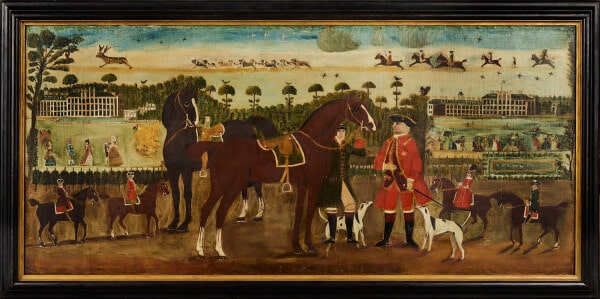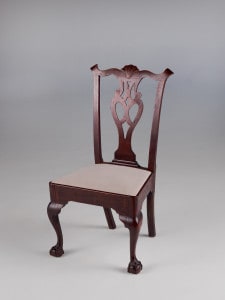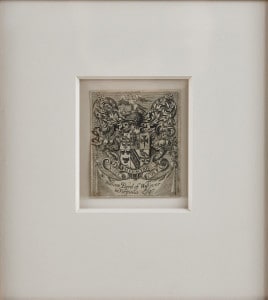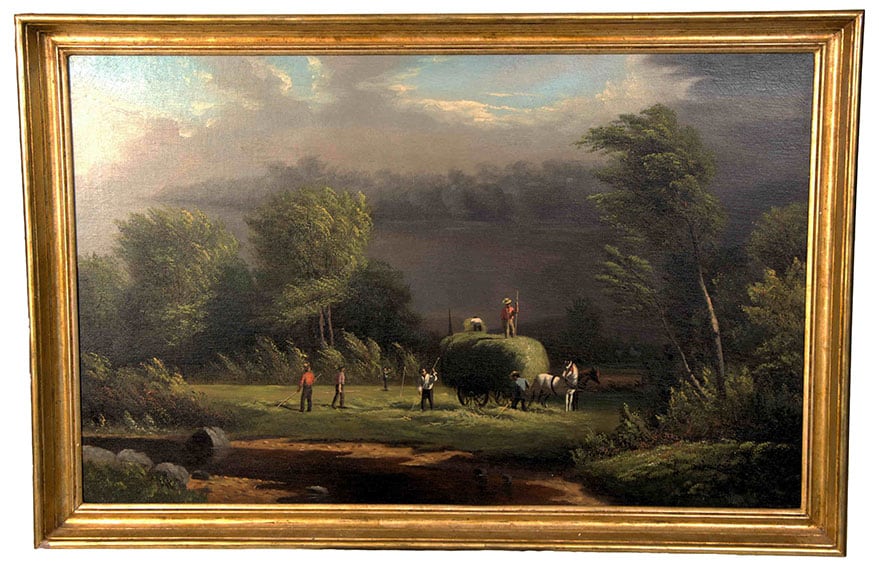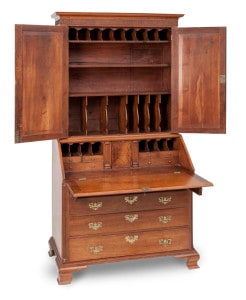
Inventory
Promenade at Kensington Palace
London, England
Signed illegibly center bottom
Dated 178(?)
Oil on canvas
64.5″ W; 32″ H
A late 18th century English satirical painting of Kensington Palace gardens depicting the palace in two separate views. The property encompassing the gardens was originally created by Henry VIII as a hunting ground, a tradition which continued into the Georgian period. In 1728, Queen Caroline, the consort of George II, created a landscape garden near the Palace and a body of water called “The Serpentine,” made by damming the River Westbourne, and was an important part of the newly formed garden. Within the garden proper the pond was called “The Long Water”. The intriguing garden was admired by Samuel Pepys, amongst others, as ‘a mighty fine cool place… with a great layer of water in the middle’.
The central figure is George, Prince of Wales (1762-1830; crowned George IV in 1820), partially identified by the Order of the Garter badge on his lapel. Known for his extravagant lifestyle and appetites, he was the leader of the social world and a choice circle of dissolutes, drinkers and hunters, but in his youth was wildly popular with the public. His secret marriage to his longtime Catholic and twice widowed mistress, Maria Fitzherbert in 1785 was unlawful in the eyes of the King and government, though George maintained a lifelong relationship with Mrs. Fitzherbert even after his legal marriage to Princess Caroline of Brunswick in 1795. George IV’s love life was rich material for Regency satirists.
The hunt scene at the top of this painting is a conclusion to the central vignette and can be interpreted as an allegory for the Prince hunting for what he could never actually have, a Catholic wife. The Prince was known as an avid hunter of both stags and women, but the appearance of the Punch figure at the end of the hunting party suggests outrageous behavior, encounters with law and order, and endless battles with the Devil – all descriptions of the Prince’s romantic relationship with Mrs. Fitzherbert.
The other scenes in the painting describe the social setting of the last decades of 18th century London society. Members of the court circles came to Kensington Palace to promenade and to see and be seen. A diarist of period observed: People would throng to see them; the ladies would take the opportunity of showing themselves, like pea-hens, in the walks; persons of fashion, privileged to enter the Gardens, would avail themselves of the privilege; and at last the public would obtain admission, and the raree-show would be complete. The full-dress promenade, it seems, was at first confined to Saturdays; it was afterwards changed to Sundays, and continued on that day till the custom went out with the closing days of George III….. The fashions of this half century, with the exception of an occasional broad-brimmed hat worn both by gentlemen and ladies, comprised the ugliest that ever were seen in the old Court suburb. Headdresses became monstrous compounds of pasteboard, flowers, feathers, and pomatum; the hoop degenerated into little panniers; and about the year 1770, a set of travelled fops came up, calling themselves Macaronis (from their intimacy with the Italian eatable so called), who wore ridiculously little hats, large pigtails, and tight-fitting clothes of striped colours. (“Tour of a Foreigner in England,” published in 1825).
Examples of these fashion conscious courtiers are captured in this painting. The group of four characters on the far left reveal the extremes of costume seen on weekend promenades in the Kensington. In particular, the lady at the far left sports a headdress worthy of the fashionable French court of Marie Antoinette.
At the opposite end of the fashion spectrum is the lady in crimson, riding with the Royal party in the central vignette. She is attired in the newest style in her military inspired gown and ostrich feather. Throughout the painting the men are fashionable in their smaller hats and pigtails, seen in particular in the hunting scene in the upper right.
The late 18th century was a golden age of satire in Britain. Cartoons and caricatures abounded, poking fun at kings, noblemen, society ladies and the institution of marriage. This painting from that period is a satirical look at the customs and costume of the English upper classes. The structure of the painting is somewhat whimsical itself with the three main vignettes surrounding the Royal hunting party out of scale with their own surroundings. The central group has an interesting number of characters looking out directly at the viewer including the horses with their saucer-size eyes.
Provenance: Knoedler and Company (1929); Collection of Colonial Williamsburg (purchased 1933).
WHY WE LOVE IT: When a piece has both a Knoedler and Company and Colonial Williamsburg provenance, you can’t go wrong. This painting will constantly entertain you with all of its minor vignettes that tell a captivating story.




